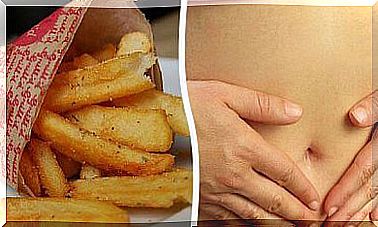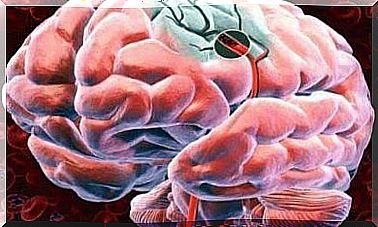What Is Brown Adipose Tissue And Why Is It Important?

Brown adipose tissue is the fat that is activated in the body when we perceive a cold sensation. White or yellow adipose tissue mainly serves as energy storage. Brown fat has a number of important health effects.
It is mainly present in the pericardial and supraclavicular regions and around organs such as the pancreas and kidneys. It is a metabolically active tissue with a large number of mitochondria in its composition. Its function is thermoregulatory and of particular importance in infants.
The activation of brown adipose tissue
When we are cold, we burn more fat to generate heat. This is mainly due to the stimulation of brown adipose tissue. Exercise also seems to activate this type of fat, which has an impact on the elimination of white adipose tissue.
A group of researchers found a positive relationship between the intake of melatonin and the increase in brown fat. The results of their study, published in 2018, suggest that administration of this hormone could prove to be an effective weight management mechanism by stimulating this metabolically active brown adipose tissue.
However, the studies conducted in this regard have been conducted on animals. This means that the conclusions drawn cannot simply be extrapolated to humans. Still, experts suggest there may be a close link in humans between brown adipose tissue, weight loss, and blood glucose control.
However, the distribution of this fat is different between individuals and there are also gender differences. Women seem to have a higher amount of this tissue , according to an article in the journal Advances in Experimental Medicine and Biology .
Thermogenesis

The thermogenesis process that takes place in brown adipose tissue aims to produce heat when the body senses a low temperature. For this purpose, triglycerides and glucose are used in a protein-mediated metabolic reaction.
There is therefore a positive relationship between the amount of brown fat in the body and energy consumption. Activation of this tissue can lead to an increase of up to 5% in resting energy expenditure, which could mean an increase in energy requirement by 100 kcal. The organs responsible for the activation of this tissue are:
- the heart, through the secretion of peptides.
- the muscles, through hormones called myokines.
- the nervous system, thanks to the secretion of catecholamines.
Nutrition and brown adipose tissue

A number of active substances in food can be related to the amount of brown fat in the body and the metabolic capacity. Capsaicin, resveratrol, curcumin and green tea seem to be able to stimulate this type of brown adipose tissue, as do conjugated linoleic fatty acids.
This could be the reason why regular intake of foods containing these nutrients is linked to weight loss, according to a study published in 2017 . However, the evidence for this is not strong and more studies in humans would be needed to confirm these associations.
Brown adipose tissue, a metabolically active tissue
Brown fat is a metabolically active tissue. It plays a role in the body’s thermoregulation and begins to function when the body registers the sensation of cold.
This activation leads to a significant increase in resting metabolic consumption, which can lead to weight loss due to the destruction of white adipose tissue. The effects of melatonin and certain active substances in foods on brown adipose tissue are currently being investigated.
The intake of certain substances could to some extent increase the proportion of melatonin in the body. It may even improve its metabolic activity. At the same time, exercise helps to stimulate the functions of this tissue, increasing energy expenditure and maximizing weight loss.
Finally, it is important to note that this fat is more common in newborns than adults. There are also gender differences. It may be present in greater amounts in women than in men.









